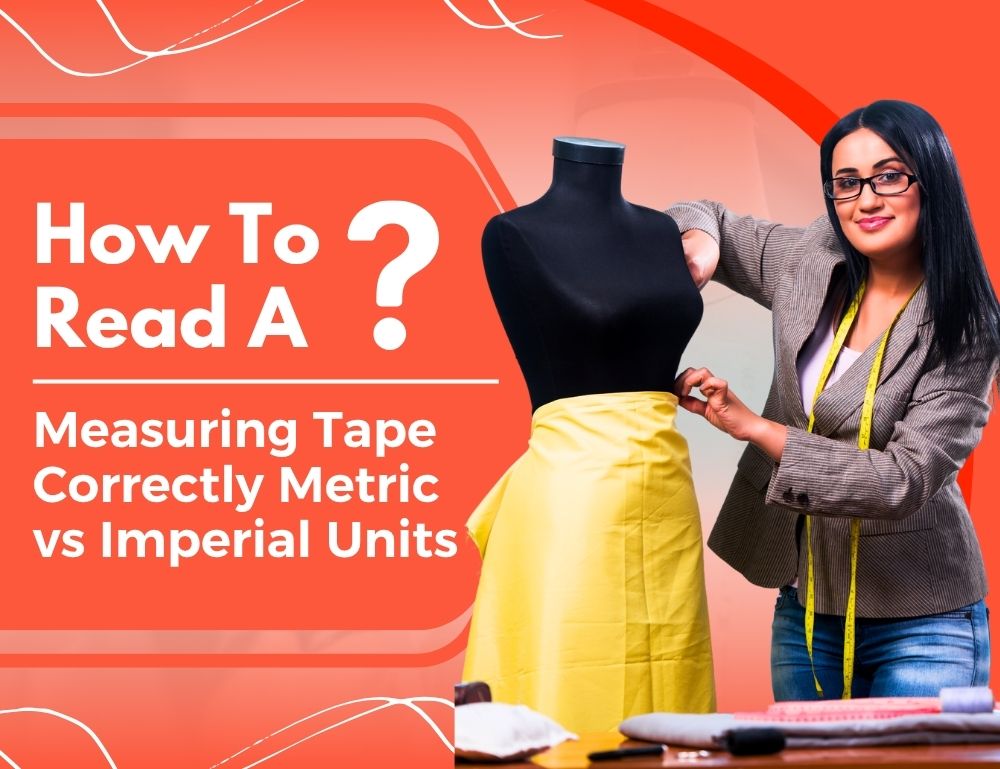How To Read A Measuring Tape Correctly: Metric vs Imperial Units
-
info@measuringtape.in
-
+91-9811223553
- +91-9899362660

homWhether you’re a DIY enthusiast, professional contractor, interior designer, or simply trying to hang a picture straight, knowing how to read a measuring tape correctly is a fundamental skill. At Measuring Tape, we understand that accuracy starts with knowledge—and it begins by understanding how your tape measure works.
In this guide, we’ll break down how to read both metric and imperial units, what the markings mean, and how to avoid common mistakes. Let’s dive into it!
Understanding The Two Main Systems: Metric vs Imperial
Knowing the system a measuring tape utilizes is necessary before you can read it.
1. Metric System (millimeters, centimeters, meters)
Used widely around the world (especially in Europe, Asia, and Australia), the metric system is based on units of ten.
- One hundred centimeters (cm) is equivalent to one meter (m)
- Ten millimeters (mm) are equal to one centimeter (cm)
Most metric tape measures display large numbers for centimeters and smaller tick marks for millimeters. One centimeter equals 10 millimeters, and one meter equals 100 centimeters.
2. Imperial System (inches, feet)
The imperial system, which employs feet and inches, is widely used in the United States.
- Twelve inches (in) equals one foot (ft).
- The fractions (½, ¼, ⅛, 1⁄16, etc.) divided by 1 inch (in)
Imperial tape measures label the inches with large numbers and divide them into fractions. These fractions can be the trickiest part of learning to read a tape.
Here’s how:
- Each small line is 1 millimeter (mm)
- One centimeter (cm) is equal to ten millimeters (mm) and is typically marked with a number on the tape measure
- Every 100 cm (or 1000 mm) = 1 meter, sometimes shown with a larger marking or bold number
Example:
If a point on the tape lies 3 large numbers past the “0,” it’s 3 cm. If there are 4 small lines past the 3 cm mark, it’s 3.4 cm or 34 mm.
Tip:
Use metric for projects requiring precision, such as architecture or furniture design. The simplicity of converting between units (just move the decimal point) makes calculations faster.
How To Read an Imperial Measuring Tape
Imperial tapes can be more complex due to fractional divisions.
Here’s The breakdown:
- The longest line marks 1 inch
- Next longest is ½ inch
- Then ¼ inch, ⅛ inch, and finally 1⁄16 inch (shortest lines)
Usually, each inch is divided into sixteen pieces. The trick is recognizing the pattern:
- If it’s the second shortest line past the inch, it’s ⅛
- If it’s the third mark, it represents 3⁄16, and so on
Example:
Let’s say a line falls between 5 and 6 inches and it’s the fourth short line—counting each 1⁄16 increment, that’s 5 + 4⁄16 = 5¼ inches.
Tip:
When using an imperial tape, take your time to count the marks. Use a pencil to mark points carefully and avoid misreading tiny fractions.
Switching Between Metric And Imperial
Some tape measures are dual-unit, showing both metric and imperial units on opposite sides or edges.
Here’s How To Use Both:
- Find the same point on both scales
- Use conversion formulas if needed:
-
- 1 inch = 2.54 cm
- 1 cm ≈ 0.3937 inch
This is handy when you’re working with international products or clients, or if your tools or materials use different systems.
Common Mistakes To Avoid
No matter how skilled you are, slip-ups can happen. Keep these important tips in mind to stay on track:
- Not starting at zero: Some tape measures feature a loose hook at the end to adjust for both inside and outside measurements. Ensure the hook is securely positioned when taking measurements.
- Reading the wrong side: If your tape has both metric and imperial, double-check you’re reading the correct system.
- Ignoring the fractions: Especially on imperial tapes, don’t round up or down unless needed—precision matters!
Reading a measuring tape isn’t just about numbers—it’s about confidence and accuracy. Whether you’re using metric or imperial units, mastering your tape measure will make every project smoother, faster, and more precise.
At Measuring Tape, we believe the right tools empower better work. Want more tips and tricks on measuring, building, or renovating? To ensure you don’t miss any updates, subscribe to our blog.

Fall in Love with Measuring
-
+91-9811223553
-
+91-9899362660
-
info@measuringtape.in
- Ghaziabad, Uttar Pradesh




